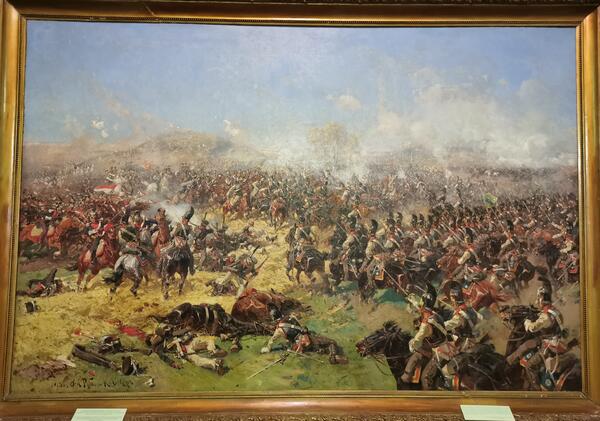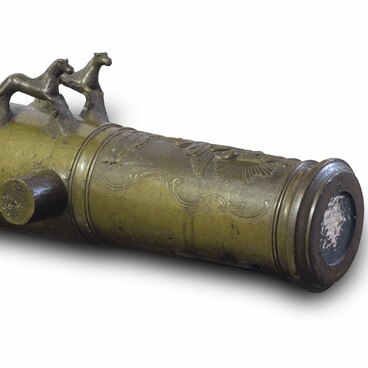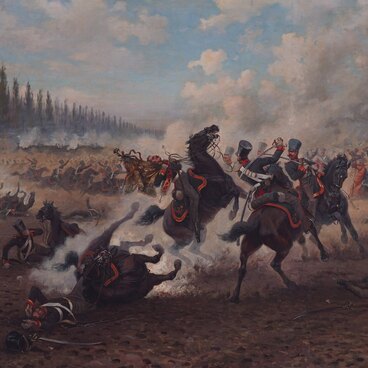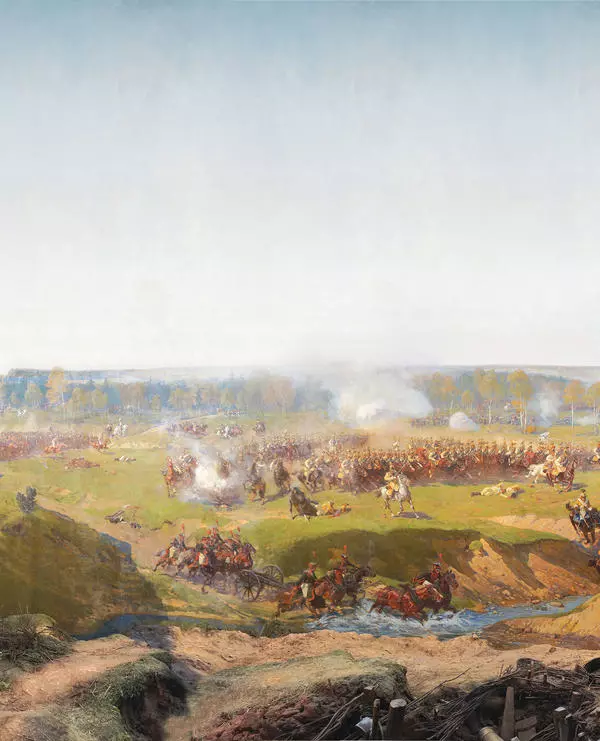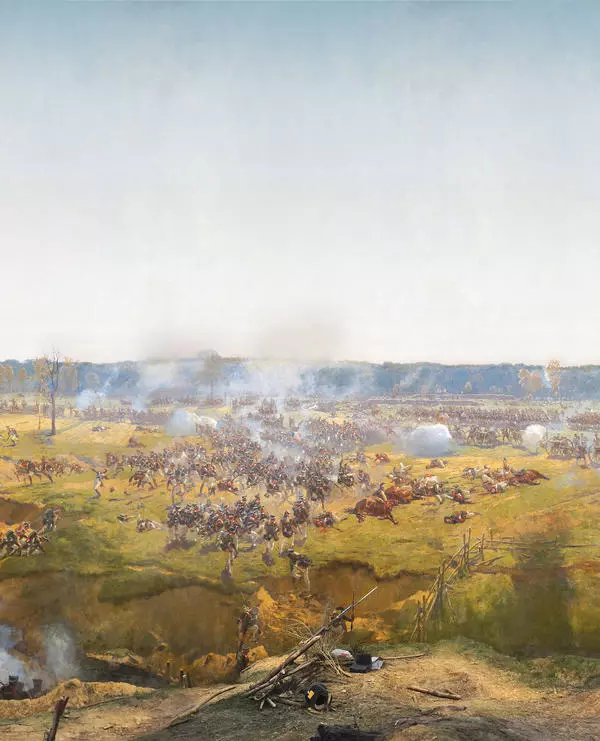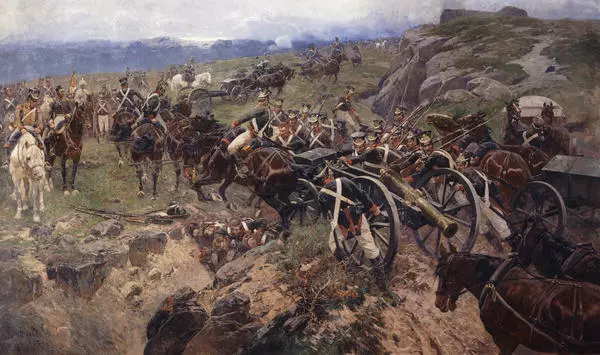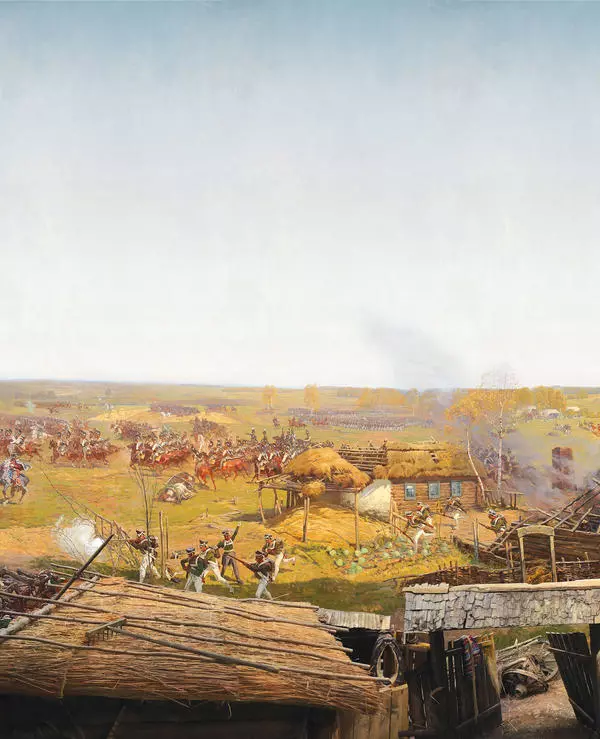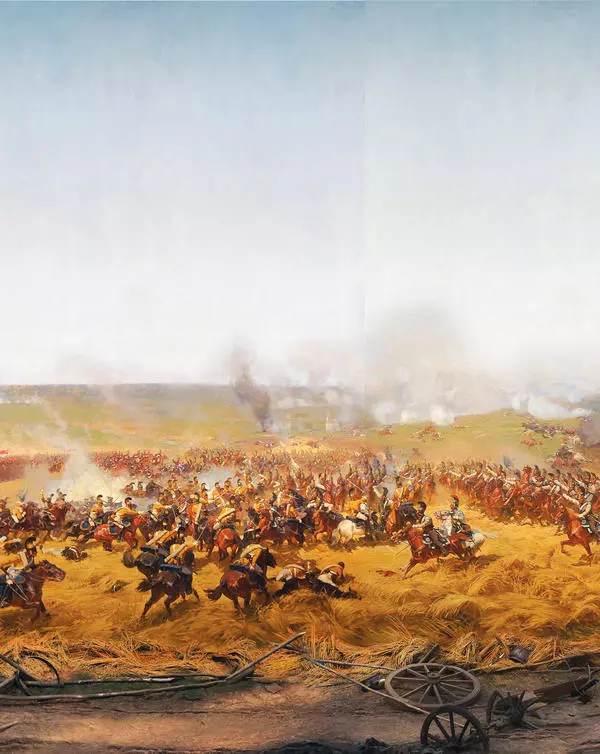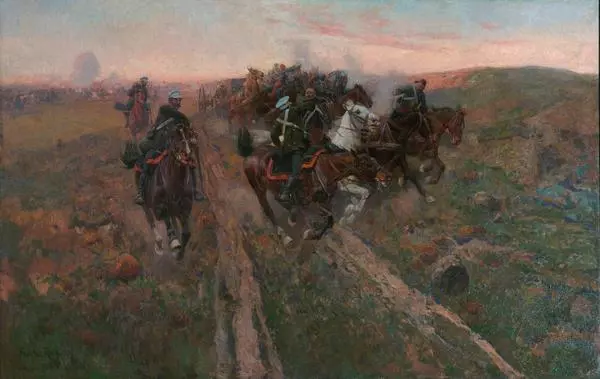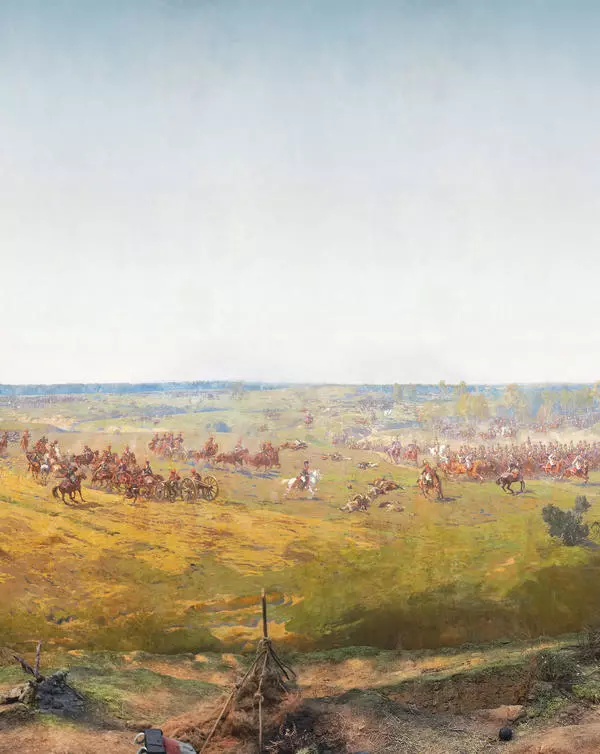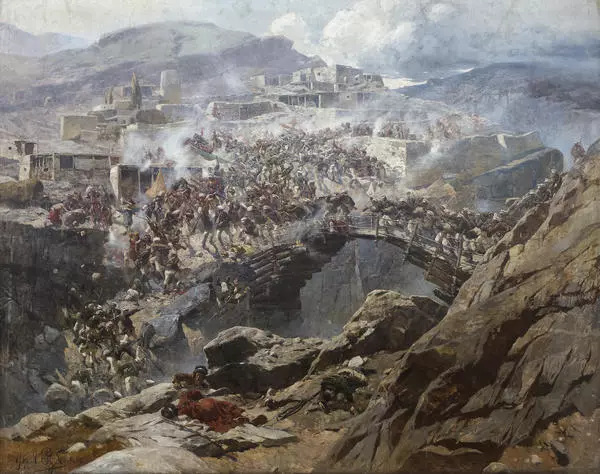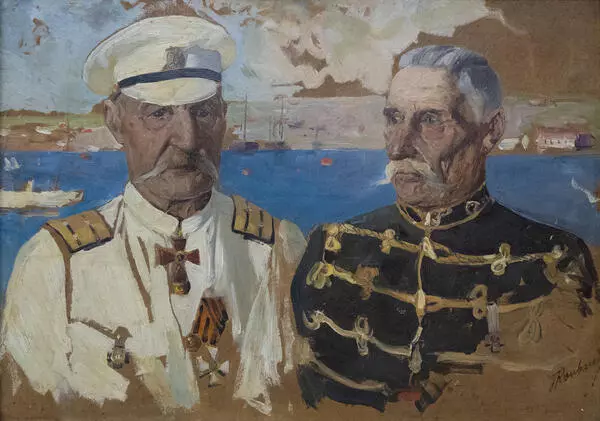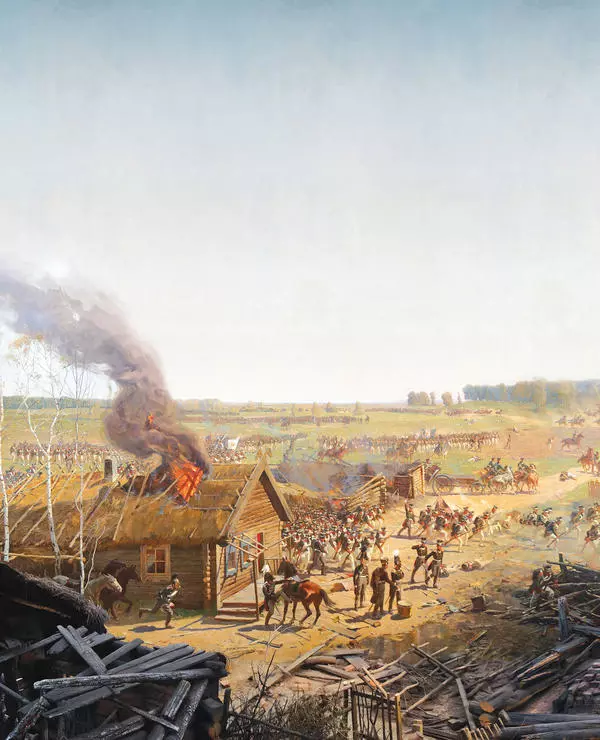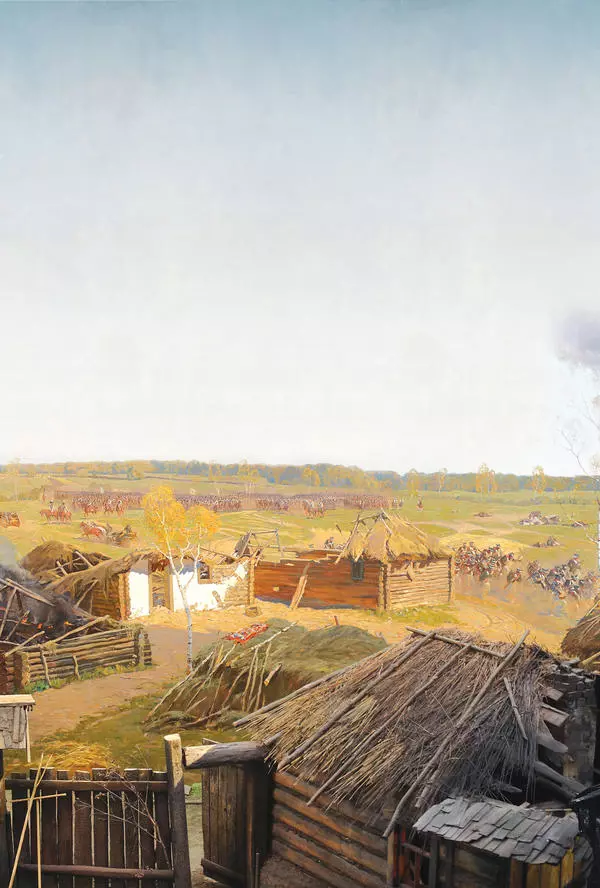Franz Alekseevich Roubaud (1856–1928) was one of the most famous battle painters of his time. His numerous canvases, including panoramas, depict the most vivid pages of Russian military history, are historically reliable and can be considered a textbook example of the battle genre.
Karl Becker (1862–1934) was a German artist who was famous for his history paintings. One of the broad topics that Roubaud addressed in his art was the Battle of Borodino. A panorama and several separate canvases are dedicated to it, as well as the painting “The Attack on Raevsky’s Redoubt”.
The presented painting depicts a counterattack of the Life Guards Horse Regiment against Napoleon’s Cavalry near Raevsky’s redoubt on the Kurgan Heights.
The Life Guards Horse and Chevalier Guard regiments especially distinguished themselves in this battle. Mikhail Illarionovich Kutuzov wrote in a report to Emperor Alexander I that “these regiments, having to fight disproportionally large forces of the enemy cavalry, stopped its initiative with extraordinary courage, and <…> completely crashing the enemy, pursued it all the way to the infantry.” By the beginning of the battle, the regiments were in reserve and were recalled by order of the commander of the 1st Army, Mikhail Bogdanovich Barclay de Tolly.
The history of the Life Guards Horse Regiment began with the formation of the Kronslot Dragoon Company on March 7, 1721. It included dragoons of Count Boris Sheremetev and St. Petersburg governorate, and the “squadron” of Prince Alexander Menshikov.
In 1722, on April 17, the company was granted the name of the Life Regiment and was established as a noble one, although it was possible to staff it exclusively with aristocrats only in 1725. It was supposed to train non-commissioned and cavalry officers — in the same way as officers and non-commissioned infantry personnel were trained in the Semyonovsky and Preobrazhensky regiments. On December 31, 1730, the regiment was renamed the Life Guards Horse Regiment.
The regiment took part in many major military campaigns, was awarded the St. George standard with the St. Andrew’s jubilee ribbon for capturing the enemy banner in the Battle of Austerlitz, as well as 22 St. George trumpets and silver kettledrums of the Swedish Life Guards Mounted Regiment (those were captured by the Life Squadron of His Serene Highness Prince Alexander Danilovich Menshikov near Poltava).
Karl Becker (1862–1934) was a German artist who was famous for his history paintings. One of the broad topics that Roubaud addressed in his art was the Battle of Borodino. A panorama and several separate canvases are dedicated to it, as well as the painting “The Attack on Raevsky’s Redoubt”.
The presented painting depicts a counterattack of the Life Guards Horse Regiment against Napoleon’s Cavalry near Raevsky’s redoubt on the Kurgan Heights.
The Life Guards Horse and Chevalier Guard regiments especially distinguished themselves in this battle. Mikhail Illarionovich Kutuzov wrote in a report to Emperor Alexander I that “these regiments, having to fight disproportionally large forces of the enemy cavalry, stopped its initiative with extraordinary courage, and <…> completely crashing the enemy, pursued it all the way to the infantry.” By the beginning of the battle, the regiments were in reserve and were recalled by order of the commander of the 1st Army, Mikhail Bogdanovich Barclay de Tolly.
The history of the Life Guards Horse Regiment began with the formation of the Kronslot Dragoon Company on March 7, 1721. It included dragoons of Count Boris Sheremetev and St. Petersburg governorate, and the “squadron” of Prince Alexander Menshikov.
In 1722, on April 17, the company was granted the name of the Life Regiment and was established as a noble one, although it was possible to staff it exclusively with aristocrats only in 1725. It was supposed to train non-commissioned and cavalry officers — in the same way as officers and non-commissioned infantry personnel were trained in the Semyonovsky and Preobrazhensky regiments. On December 31, 1730, the regiment was renamed the Life Guards Horse Regiment.
The regiment took part in many major military campaigns, was awarded the St. George standard with the St. Andrew’s jubilee ribbon for capturing the enemy banner in the Battle of Austerlitz, as well as 22 St. George trumpets and silver kettledrums of the Swedish Life Guards Mounted Regiment (those were captured by the Life Squadron of His Serene Highness Prince Alexander Danilovich Menshikov near Poltava).

